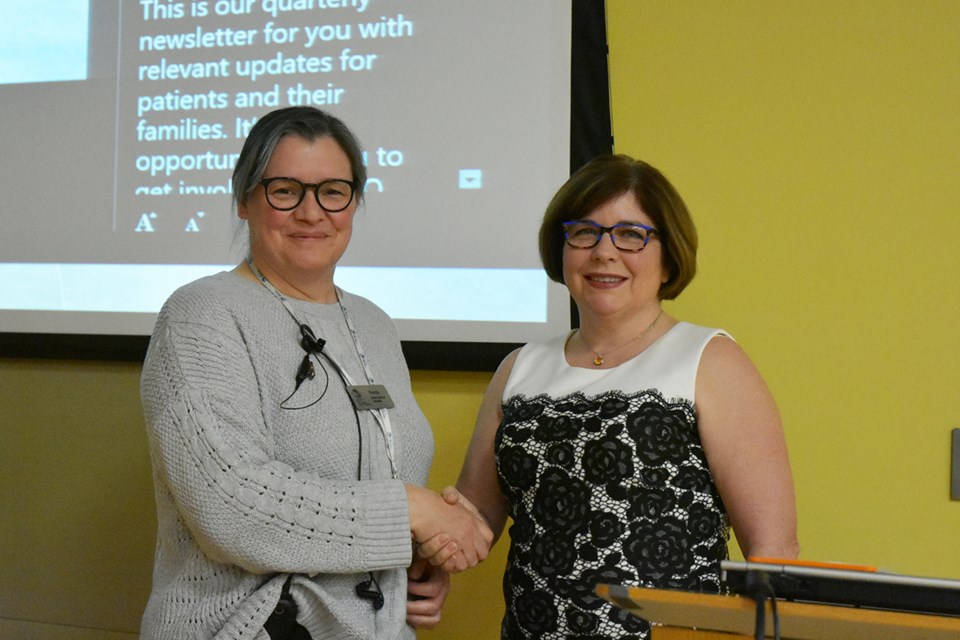Nearly two years since Canada passed a law allowing medically-assisted dying, stigma and sensitivity still surround the issue for patients and doctors.
The number of physicians willing to participate is limited — only 1/3 of those surveyed said they would participate in some way, and even fewer were willing to provide medical assistance in dying, said Dr. Carol Leet.
“I think doctors are struggling with this,” she said, noting the reasons vary.
Hospitals with religious affiliations may not permit medically-assisted dying, there’s no billing code for the procedure, and this is a “huge” amount of paperwork — all of which can deter physicians from participating, she said.
“It is emotionally draining, time consuming… There’s a certain amount of stigma involved in this.”
Leet, a Brampton pediatrician, recently led a discussion on the issue at the Bradford West Gwillimbury Public Library.
Medically-assisted dying has been an option for the terminally ill for decades in countries that include the Netherlands and Belgium.
But in Canada, said Leet, it was a crime to assist a suicide. A physician who helped a patient end his or her life “could be charged with a crime, such as manslaughter or murder.”
That interpretation was reaffirmed in 1993, when Sue Rodriguez, suffering from ALS, challenged the constitutionality of Canada’s laws — and lost her case in a 5-4 decision by the Supreme Court of Canada.
But in 2015, the court ruled differently.
In Carter vs. Canada, the Supreme Court ruled the restrictions against medical assistance in dying violated the Section 7 charter rights of plaintiffs — Gloria Taylor, diagnosed with ALS, and the family of Kay Carter. Carter, who had spinal stenosis, travelled to Switzerland for an assisted death.
Section 7 is the section of the Charter of Rights and Freedoms that guarantees the “right to life, liberty and security.”
The Court ruled that not having the option of medical assistance in dying was actually driving patients to die by suicide before their condition became intolerable, therefore curtailing their right to life.
The government of Canada was given a year to revise the laws. When it became clear the deadline would be delayed, the College of Physicians and Surgeons of Ontario stepped up to provide policies and clarity for its members.
It was a balancing act — with the rights to access for patients on one hand, and the rights of physicians who conscientiously object on the other.
The Canadian legislation that passed in June 2016 spelled out strict eligibility criteria:
- Patients requesting assistance must be over the age of 18 and capable
- They must be suffering from a “grievous and irremediable” medical condition that causes intolerable physical and psychological suffering
- There is no treatment for their condition that is acceptable to the patient
Individuals must also be eligible for Canadian health care — a restriction that “prevents medical tourism,” said Leet.
Consent must be voluntary, informed, and can be withdrawn at any time.
It is an emotional issue, and there is still plenty of controversy, Leet said.
Physicians and pharmacists can personally decline to provide medical assistance in dying, but they must ensure patient access by providing an “effective referral” to a willing physician “in a timely manner” by accessing a list of participating physicians that is maintained by the Ministry of Health and Long-Term Care.
The Christian Medical and Dental Society challenged the referral requirement in court and lost, but may still appeal.
For patients, there are many issues to face, such as access and length of the process, which requires two assessments, written requests, and a 10-day period of reflection.
It can take weeks — extending the period of “intolerable suffering” for the patient, increasing the risk that their condition may degenerate and they may become incapacitated.
Once incapacitated, a patient is no longer eligible for medically-assisted dying.
Access, incapacity, the right to choose medically-assisted dying for mature minors and those with mental illnesses are all issues still under debate, she said.
“It’s all about dignity and control and choosing what happens at the end of your life.”
If a patient wants an assisted death in Canada, she said, there is now at least a path, a protocol, and a process that can be part of an end-of-life dialogue.
Dr. Joel Kirsh, president of the College of Physicians and Surgeons of Ontario, noted last year that Carter vs. Canada “marks a huge change for medicine and for its practitioners. But it represents an even bigger change for patients.”
“Simply having this option available to them, whether or not they ever wish to pursue it, is absolutely key,” he said. “People want to have a sense of control over their lives.”
How medical assistance in dying works:
Step 1: The patient asks a physician or nurse practitioner about medical assistance in dying. At this point, an objecting physician or nurse practitioner must make a referral to a non-objecting health care provider.
Step 2: The consenting physician or nurse practitioner assesses the patient to determine if they are eligible.
Step 3: The patient makes a written request for medical assistance in dying in front of two independent witnesses. The witnesses cannot be beneficiaries under the patient’s will or receive any financial or material benefit from the patient’s death. They can also not own or operate the health care facility at which the patient is being treated, or be part of the person’s health-care team.
Step 4: The patient must be reminded that they can withdraw their request at any time.
Step 5: A second independent assessment of eligibility must be made.
Step 6: 10-day period of reflection.
Step 7: Physician or nurse practitioner informs dispensing pharmacists that a prescribed substance is intended for medical assistance in dying.
Step 8: Provision of medical assistance in dying, provided the patient is capable.
Step 9: Mandatory report to coroner and certification of death.



